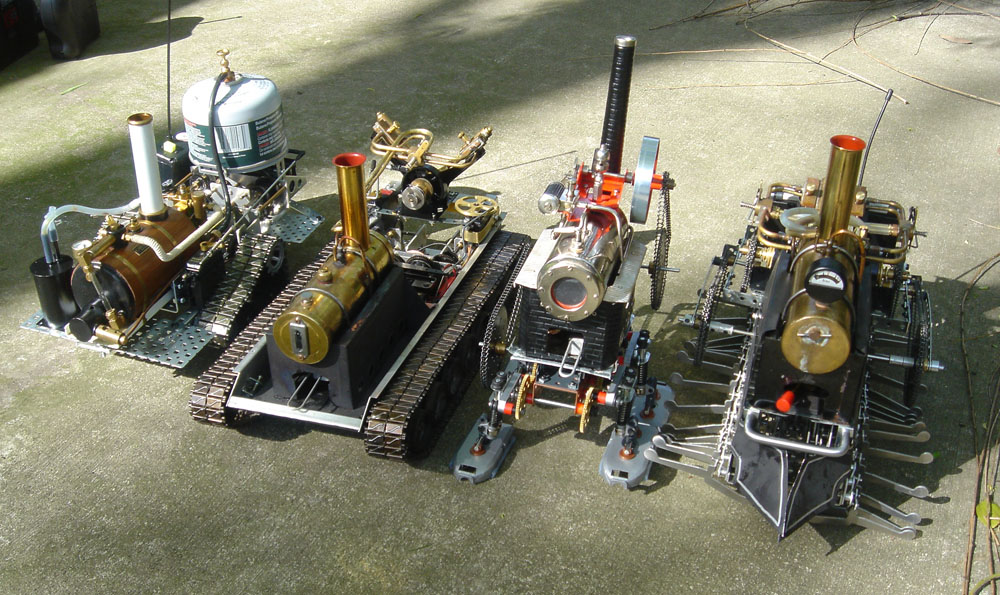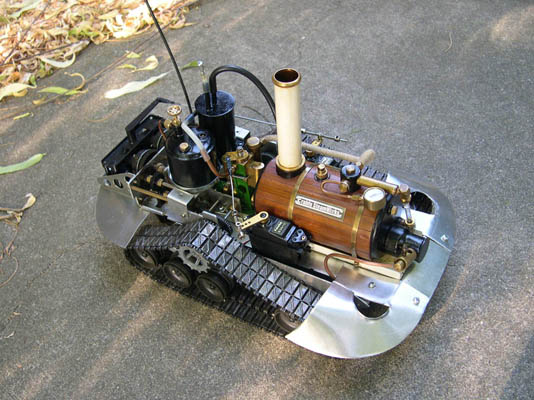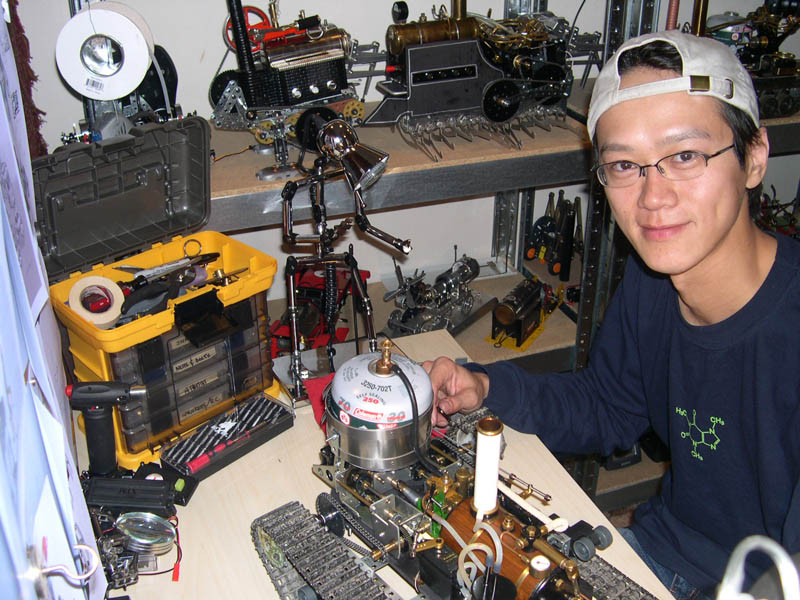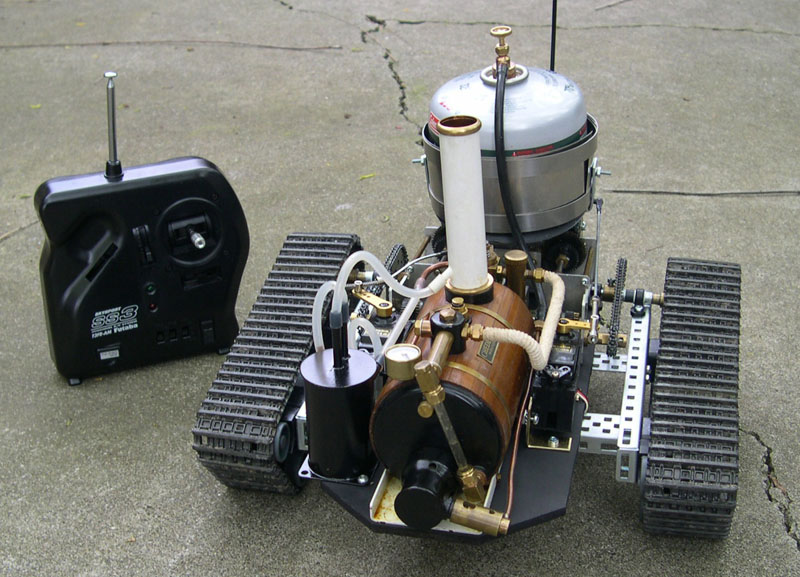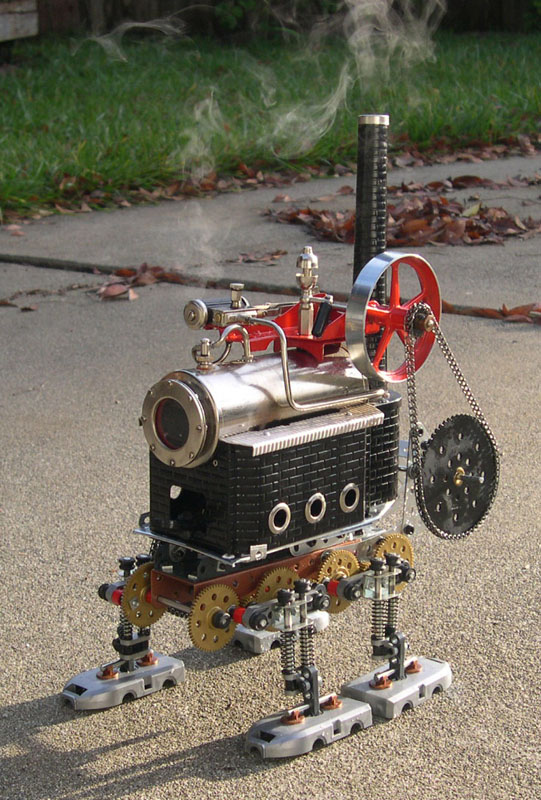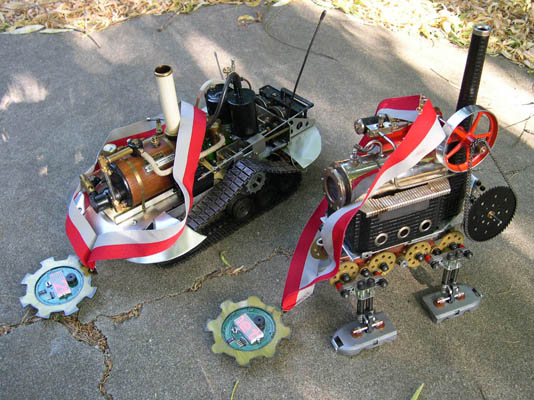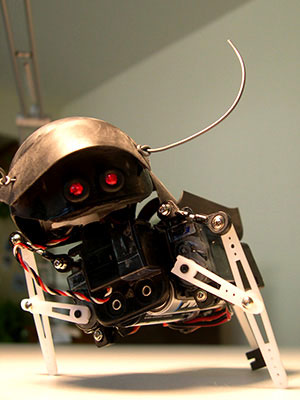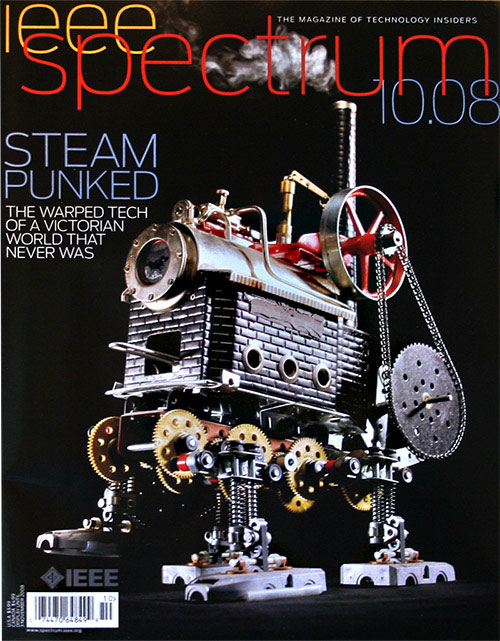Imagination and Mechanical Skills Combine for Unique Steam Powered Robots
Steam Engines like You’ve Never Seen Before
The capricious steam powered robots that I-Wei Huang designed and built have started to gain quite a following. In March 2006, NBC ran a segment featuring some of his fanciful contraptions, and I-Wei’s website was getting a lot of attention, too. A number of articles have also been published about his unique work. Though I-Wei doesn’t classify himself as a great craftsman, his work is so outrageously clever that we thought it deserved to be recognized here.
Craftsmanship is not just about fine detail and gleaming finishes. It is also about making complicated arrangements of parts work together smoothly and effortlessly—often to accomplish some task. Though most of the components in I-Wei’s structures were already made by others, he combines them in ways never envisioned by the previous makers.
I-Wei considers himself an artist first and foremost. In fact, his regular work is in the field of animation. It seems fitting that his second love is to animate objects, giving them movement and a life of their own. I-Wei says that he enjoys leaning toward “wacky and silly” with his work. However, since form follows function, the objects he builds must not only look cool, but they also need to work properly. I-Wei is interested in old tech, but with a twist—most of his projects are made in the spirit of the Steampunk movement.
Early Skills Developed Through Tinkering
Surprisingly, I-Wei has no engineering or mechanical training aside from a few drafting classes in school. His skills were developed from early childhood, mainly through experimentation. I-Wei noted, “Ever since I can remember, I’ve been curious about everything, and loved to figure out how things work on my own. When I was a young kid, I used to take things apart—telephones, radios, general household appliances—just so I could see what makes them tick.”
I-Wei continued, “Sometimes I would get into trouble with my parents because I couldn’t always put them back together. But most of the time I could, and they never knew I had played with them. I was always the handyman around the household. I just loved to put things together or fix them, regardless of whether they needed fixing or not, and to figure out how each thing worked.”
A steam locomotive with centipede drive mechanism works its way down the sidewalk. This unique machine is dubbed, LocoCentipede.
Making Do With What He’s Got
At the time of this writing in 2006, I-Wei was using his studio room to work on these machines. His workspace consisted of a simple shelf, table, and storage boxes. He was looking forward to someday having a garage or shop, and learning more about machining so he could make exactly the parts he needs. I-Wei was in the process of obtaining a small precision lathe to get started. Thus far, most of his work has been done with hand tools and a Dremel mototool.
This robotic tank was modeled to resemble the Trilobite—an aquatic creature with a hard shell that flourished for millions of years. I-Wei’s Trilobite Tank won “Best of Show” at the 2006 RoboGames (competing against 300 other bots).
Got Steam?
Interestingly, I-Wei uses real steam engines to drive his machines, which he controls by means of radio controlled servo motors. I-Wei said, “These steam machines are real miniature live steam engines. The principles are simple: heat + water = steam. Steam pushes pistons and provides power in a circular motion. How you harness that work is up to you. I use mainly stationary or marine engines to start.”
“They use alcohol, gas, or solid fuel tablets for heat, and require oiling on each run. Distilled water is recommended, and steam pressure can build up around .8 – 1.5 bars, or around 10-20 psi, which is not a lot of pressure. They have safety valves which release the steam at a certain pressure, so as not to ‘blow up,’ and typical running time is about 10 minutes.”
The Design Process
I-Wei calls himself, “An artist with an overblown imagination.” He is a concept artist and animator by trade, and often draws Steampunk inspired machines. I-Wei puts quite a bit of thought into his drawings, so when he started making his contraptions, the process of understanding the mechanics and movement came naturally.
Visualizing and planning in his head helps tremendously in making a successful machine. I-Wei is always conceiving interesting solutions to existing (and nonexistent) problems. It is in his nature to be creative, and he often makes silly things—art or machine. However, I-Wei still relies as much on proven mechanics as he can.
I-Wei noted, “I hack things together more than I invent something from scratch. A lot of the time that it takes to make one of these machines is spent searching for clutches, chassis, leg systems and such.” He calls this, “Frankensteining.”
Once things are planned out, it’s just a matter of figuring out how to mount the engines, boilers, and R/C gear. There is a lot of trial and error spent on the gearing for optimal speed versus torque. I-Wei considers himself more of a hacker than an inventor, but he hopes to learn enough about machining to build most everything from scratch someday.
The Steam Beetle has a sheet metal shell with folding wings. However, the robot is mounted on a sturdy model truck chassis.
Naturally, Meccano/Erector set parts make for relatively quick proof of concept, and I-Wei uses them for support as well as mechanics. (The Steam Walker is made entirely from Meccano parts.) I-Wei remarked, “I usually start with pulleys and bands, as they are easy to work with, then upgrade them to sprockets and chains once proven. Finding the right gearing ratio for the job is a tricky process.”
“Steam engines produce high rpm but low torque. They stall easily. Put your pinky finger on the flywheel with the slightest pressure and it stops. Over time, I’ve developed a sense of how much a machine must be geared down to perform the work, based on the engine and weight. But gearing is still largely a trial and error process, and requires quite a bit of time to tune it.”
I-Wei Wins Two Gold Medals at the 2006 RoboGames
In June 2006, I-Wei put his machines up against 300 other robots in the annual RoboGames competition. He won gold medals in the two categories he entered: Kinetic ArtBots (Steam Walker) and Best of Show (Trilobite Tank). Watch a video below of two of I-Wei’s robots after the competition.
Building More Bots
After his success at the RoboGames, I-Wei began building a steam spider with Joe Klann. I-Wei wanted to make sure that Joe received his due recognition in the field, too. Ultimately, I-Wei was able to complete that steam spider, which can be seen in the video below. In 2009, several major publications picked up on I-Wei’s “SwashBots.”
These small, buglike bots are based on the movement of the swashplate used in R/C helicopters. I-Wei was even selected by Popular Mechanics as one of ten “Backyard Geniuses” honored in their August 2009 issue.
In 2008, I-Wei created this small cockroach-like robot that moves by sliding its three legs in various directions. He named it “SwashBot.” Watch a video of the SwashBot below.
I-Wei’s Robots in the Media
A few articles have featured I-Wei and his imaginative steam robots. There are also some videos of the bots in action. Click the links below to read more.
Read the Popular Mechanics article featuring I-Wei.
Read an article by Make magazine on I-Wei’s SwashBot construction.
Additionally, I-Wei’s work was shown in a History Channel special.
Watch a presentation that I-Wei Huang gave for Exploratorium below.
View more photos of I-Wei’s inventive Steampunk robots.


